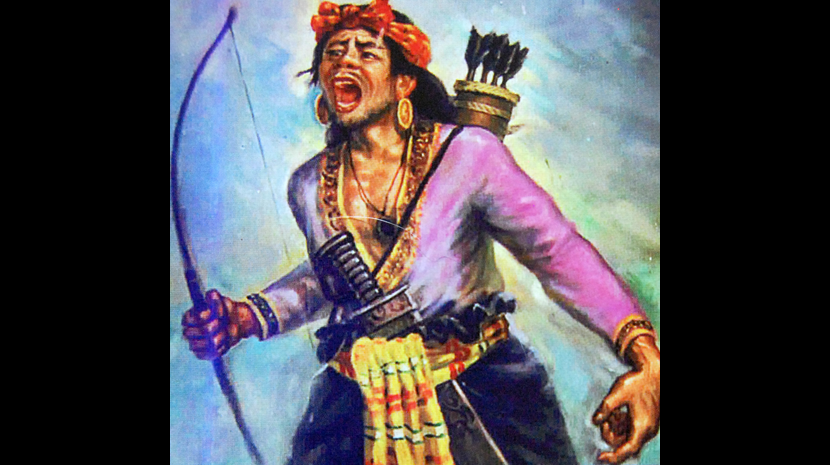Proem
The Tamblot incident in Bohol was not an uprising, nor was it a rebellion because in 1621 or 1622 the Spaniards were not in control of major areas of Bohol. It was a resistance of the organized religion in Bohol against the invasion of Christianity.
Bear in mind that before the year 1563 the Bo-ol Kingdom was already beginning to convert to Islam. Karyapa, the leader of the organized religion in Bohol pronounced her cursed against the Bo-ol Kingdom that it will be destroyed. In the year 1563 or two years before the arrival of Gen. Legazpi, the prophecy was fulfilled and the prestige of Karyapa was increased throughout her scope of Influence.
Tamblot
Tamblot was the next religious leader after Karyapa. There were animistic worships in Bohol but the organized religion led by Tamblot was different. Their God was “Ay Sono”. By this name alone we can discern that the religion was similar to the “Jewish Kabbala”. The organization and beliefs were similar to the Jewish religion during the time of the “Judges” in Israel.
The religion existed in Bohol, Southern Leyte, and Caraga or Surigao. Tamblot was the “Biki” or overall religious leader and translated by the Eskaya as “Cardinal-Priest”. Take note that the word “Ariki” was the term used in the Easter Islands in the Pacific. The leader in Southern Leyte was Bankaw, and Pagali was the leader in Caraga or Surigao.
In Bohol the towns that were under Tamblot had their own “Biriki” or priest-leader or “bâbâ-iláng” (eloquent speaker) and known in our history as “babaylan”.
Malabago (Now: Bilibili, Cortes) was headed by Tamblot. Tagubaas, Antequera was headed by KatorKuhon. Ilihan, Cortes was headed by HiborTasing, Batuan, Bohol was headed by Bula-od. Tawngonan, Loon was headed by Tami-isanKaunga-an, Tubigon was headed by Tagbakán.
The Spaniards controlled the following places in Bohol: Loboc, Baclayon, Inabanga, Maribojoc, and Malabago. The overlap was in Malabago and there the conflict started because Tamblot was the leader in Malabago.
Cause of the conflict
According to Eskaya records the direct cause of the conflict was the “LinganayngaUgis= White Bell”. The Spaniards wanted to steal the White Bell (presumably a large silver bell). Spanish records say that the bell was of “native design”. Therefore it did not look like a Spanish bell with a clapper (Bis: butú-bútò) but like a Buddhist bell with a striker from the outside of the bell.
According to Spanish records the direct cause was the challenge of Tamblot to the Jesuit priest as to whose God was more powerful; was it “Ay Sono” of the native religion or Jesus Christ of the Christians. (Note: Actually there was no conflict because “Ay Sono” is the Messiah of the Jewish Religion and Jesus Christ is the same Messiah being worshiped in Christianity.)
The challenge was whose God can produce food provisions from the bamboo stalks. The Jesuit priest prayed first in Latin and after praying he cut the bamboo stalks and no food provisions came out.
Tamblot came next. Tamblot was a tumanan or hermit with similar traits as John the Baptist in the Bible. He prayed to “Ay Sono” and after praying Tamblot cut the bamboo stalks and out came rice, wine, fish, etc. Tamblot won and the people sided with Tamblot. Naturally the defeated Spanish priest would record “a trick and work of the devil”.
Opportune Time
Tamblot waited for an opportune time to resist Spanish incursions. On July 20, 1621 the message was received in Manila via Macao of the beatification of St. Francis Xavier, the founder of the Jesuits.
The Jesuits in Bohol went to Cebu to celebrate the occasion. Tamblot seize the occasion to recover the towns. The Spanish controlled towns of Malabago, Maribojoc, and Inabanga left the Spaniards. It was only Baclayon and Loboc who remained with the Spaniards.
Alcalde Mayor Alcarazo
Upon being notified of the situation, Don Juan de Alcarazo, the Alcalde-Mayor (Provincial Governor) of Cebu in which Bohol was still a part, gathered 50 Spanish soldiers and more than 1,000 Pampango and SiyaloCebuanos (from Carcar and Barili, Cebu). The invading force took off on January 1, 1622.
The Spaniards choose to land in Loboc and walk the 18 kilometers to Malabago. Fr. Casimiro Diaz’s account says; “For five days, the Spaniards traveled through rugged hills and deep ravines, crossing marshes where the mud came to their knees, and shedding their blood on the thorns and briars. On the fifth day the insurgents killed a Cebuano Indian. (Note: Pedro Paterno’s account says “killed many Spaniards and Cebuanos.)”
Do you think these pitiful condition of the Spanish invaders can win over a well entrenched (more than 1,500) Boholanos?
Boholano Redoubt
When the Spaniards started their march, Tamblot left his settlement and went to a prepared redoubt on top of a hill in now Tupas, Antequera near the confluence of the Biga and Abatan River. I have visited the site and it is a commanding place about 100 meters above the river and can see a long distance towards the Abatan and towards Balilihan. The stone fortifications described as “media luna = half-moon” formation is still there.
In the abandoned settlement of more than a thousand houses was the temple. The description of the temple is similar to the “traveling tabernacle of the Prophet Moses”. The Spaniards were still able to recover jewels, gold, many bells, etc. You can imagine the richness of Malabago because these were only what were left behind. Don Alcarazo shared some of the gold to the Spanish Governor-General.
The Battle
The Boholano redoubt was well selected. It could not be approached through the river because of high cliffs. It can be approached only from the opposite side of the river and put about 100 soldiers on a plain below the hill. This plain is within throwing distance of stones, spears, and arrows.

